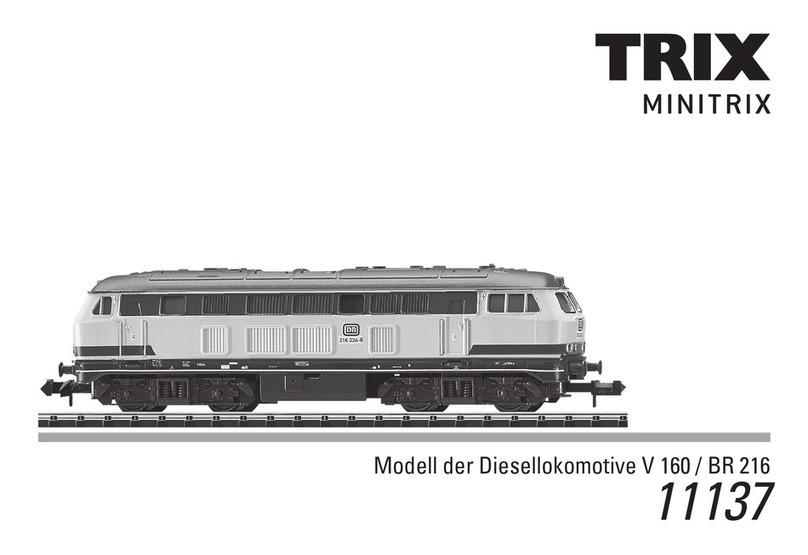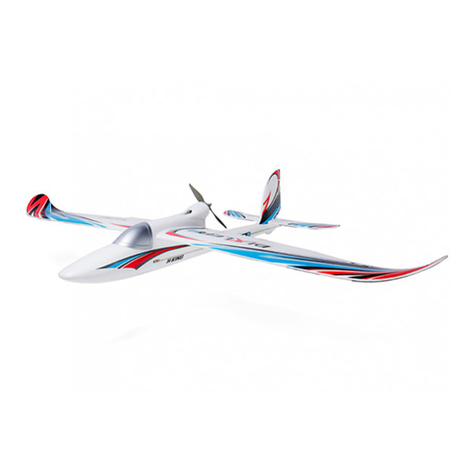Seaducer 60 User manual

INSTRUCTIONS
SEADUCER MODEL 60 & 80
This Basic Hardware Kit itemized below includes the initial components necessary to
assemble the Model 60 or Model 80 Boat. Other major components needed to complete the
total task are ordered separately and include the Boat Package, a Motor Package, R/C Radio
Package, and an optional Total Hardware Kit. These instructions assume that you have all the
packages including the Total Hardware Kit, or have access to all comparable THK parts.
We suggest you read the entire instructions before starting the assembly. Drawings & photos
on the back pages will help in the assembly procedure. Carefully follow each step to ensure
proper assembly and avoid any costly mistake. Total assembly time for a semi-experienced
hobbyist is approximately 10-12 hours. Use normal safety precautions during the assembly.
1. BASIC TOOLS & SUPPLIES NEEDED
a. Propane Torch 1. 4 #6 self-tapping screws, 1/2"
b. Allen Wrench Set m. 2 Rubber Bands, #64
c. Drill & Bits 1/16, 1/4, 9/64, 5/32, 11/64, 8/32, 1/2 n. 3M Clear Tape, 3/4-inch HD
d. Tap Wrench for 8/32 screw o. Boat Cradle (see step 12.4)
e. Deburring tool for 8/32 screw hole p. Scrap wood, 1/4 x 3 x 5
f. Dremel Drill with 90-degree adapter (optional)
g. Solder Gun
h. Loctite (Red or comparable)
i. Crazy Glue (or comparable)
j. Fiberglass & Polyester Resin (Bondo brand or ?), or 2-Hr Epoxy
k. Silicone sealer (for all boat mounting holes not using grommets)
2. BASIC HARDWARE KIT INCLUDES:
a. Drop down Motor Mount Assembly
b. Strut Assembly
c. Rudder Assembly with water pick up
d. Pipe Mount Assembly
e. R/C Antenna
3. BOAT PACKAGE INCLUDES:
a. Finished Hull with glassed-in stringers
b. Fiberglass Holding Tray for fuel tanks
c. Turn Fin
d. Fiberglass Radio Box & Lid
4. MOTOR PACKAGE INCLUDES:
a. Motor (glow plug ordered separately)
b. Flex-Hex Coupler
c. Header Pipe
d. Tuned Pipe
Recommendation: Using the supplied drop down motor- mount (2a) will set the motor near
the bottom of the Deep-Vee hull and thus provide optimum boat performance. We do not
advise using any other type of motor mount kit (example: RPM Mount Kit) with this custom
Seaducer Hull,
1/02 -1- Issue 0

5. TOTAL HARDWARE KIT
(One each item unless otherwise specified)
a. 2-oz fuel tank with cap (Sullivan Pkg. 436)
b. 24-oz fuel tank with cap (Sullivan Pkg. 444)
c. 1/4-inch brass tubing, 12 inches
d. 5/16-inch brass tubing, 36 inches
e. 5/32-inch brass tubing, 12 inches
f. 6-pack brass hooks, 1/2-inch
g. 4 nylon ty wraps, 6-inch
h. Large fuel line, 3/16-inch, 48 inches
i. Medium fuel line, 1/8-inch, 24 inches
j. 2 #6 cap screws, self-tapping, 1/2 inch
k. .250 dia. flex -shaft (24 inch) with. 187 dia. subshaft
1. 1/4-inch drive dog
m. Prop (Seaducer balanced):
• For Model 60 - (Octura X460 2 blade or X560)
• For Model 80 - (Octura X462 2 blade or X465)
• For Model 90 - (Octura X665 or X467)
n. 3/16 Prop Locknut
o. 440-push rods, 36-inch
p. 440-push rods, 12-inch
p. Pkg. 440-push rod threaded ends
q. Pkg. 440-push rod solder-on ends
r. Pkg. 440-push rod seals
s. Hardwood Mount, 1/4 x 1-1 /2 x 3 (Steering Servo Holder base)
t. Hardwood Mount, 1/4 x 1 x 2 (Throttle Servo front)
u. Hardwood Mount, 1/2 x 1/2 x 1 (Throttle Servo aft)
v. Motor starter belt, medium 17-inch nylon
w. Switch Mount, Radio On-Off
x. Water Outlet Fitting
y. Pressure Fitting, Tuned Pipe
z. Tuned Pipe Coupler, silicone
aa. Floatation, 6 feet Noodles. (Kids pool Toy)
Note: Most items in paragraph 5. Can be obtained from your hobby supply source
PROP INFO
The prop for this boat is very critical for top performance and the model used depends on the
customer's plan of operation (i.e., sport, competition racing, etc.), plus his or her experience.
Regardless, when buying a replacement prop, purchase only a high quality, comparable prop.
And remember, bigger is not always better; more torque will not improve this boat's overall
performance. (Note that the Prather prop and other similar props have been race-tested and
typically do not perform well with this Seaducer hull). Contact a Seaducer Boat technician for
advice before selecting a non-Octura prop.
Also, any replacement prop should be pre-balanced to obtain peak performance from craft.
Use a local prop expert for this service or contact Seaducer Boats.
-2-

STEP 1 – Boat Stand
Construct a boat cradle using 3/4-inch ID PVC pipe with 1 8-inch long horizontal bars wrapped
in cushioning tape (see Pic. #9). This cradle will be useful in the transporting and general
operation of the boat, and if built early would assist in the initial assembly of the boat.
STEP 2 - Fuel Tank Assembiy
1. Open the 2-oz. fuel tank package (5a) and discard the two brass tubes, two 6-inch nylon
Tubes and the metal ties (very sharp). Open the 24-oz. fuel tank package (5b) and discard
one of the 1/8 brass tubes, two 6-inch nylon tubes, metal ties, and the black gas stopper.
2. 24-oz. tank-. Make a fuel vent tube by using an Allen wrench and finger-bend 2 inches of the
1/8-inch brass tube (from 5b pkg.) to about a 120-degree hook shape as shown in Picture #1.
This curved end must fit up in the bubble of the 24-oz fuel tank; re-bend the tube if necessary.
The remaining 1-1/2 inch of tube can extend from the tank neck.
3. 24-oz tank: Make a fuel pick-up tube using the 5/32-inch brass tube (5e). Heat 3 inches
Of one end with the propane torch and use an Allen wrench to form a 45-degree bend (see
Pic. #1). The curved end must lay flat in the tank bottom and face aft and to the left corner.
Optionally, cut the tube tip at a 90-degree angle to maximize fuel pick-up. This time, allow a
3/4-inch extension above the tank neck. Cool the heated tube in water and cut-off & save the
excess tube. Deburr this cut(s) and all future brass tube cuts.
.
4. 2-oz. tank- Make two fuel tubes using the excess 5/32 brass tube. Repeat above Step 1.3 but
cut & bend two 3-inch lengths (see Pic. #1). Note that the fuel-out tube (to carburetor) must lay
flat in the rear left corner of this tank and the fuel-in tube must fit up in the bubble, Extend both
tubes 3/4-inch above the tank neck- discard the remaining 5/32 tube.
5. Tank caps: Remove the cap parts from the 5a and 5b pkgs. (i.e., small nylon caps, rubber
stoppers, larger outer caps and 2 #6 tap screws). Enlarge the hole size in the nylon caps for
the 2-oz tank to 5/32 for both holes (to accept the fuel-in and fuel-out tubes). For the 24-oz
tank, enlarge the left-side cap hole to 5/32 and the other hole to 1/8 for the vent tube. Check
the tank neck & cap lids for a smooth surface; remove any mold imperfections.
6. Refer to Picture #1 and route the fuel and vent brass tubes through the tank caps as shown
(i.e., insert the tubes threw the aligned holes in the smaller cap, the rubber stopper, the outside
cap, and then compress tightly together.) Assemble the caps for both tanks. At this time,
finger-bend the l/8 tube extension (24-oz. tank cap) slightly toward the stern.
7. Firmly insert the cap assemblies onto the respective fuel tanks (cap with 1/8-inch brass
Tube goes on the 24-oz tank) with the brass tubes properly positioned. (If tube adjusting
Is needed, use pliers and lightly twist until the respective tube is positioned flat in the bottom
of the tank or in the tank bubble as previously specified.) When all tubes are in place, add
the #6 tap screws (step 1.6) to the cap centers to expand & lock-in the caps.
8. Refer to Pic. #2 and center drill 1/16 holes in the four wood-reinforcement points on the fuel
tank holding tray (3b). Screw in four of the #6 brass hooks (5f). Place the fuel
Tanks in the holding tray and secure with the double 6-inch ty wraps (5g) per Pic. #2.
-3-

STEP 2 - Fuel Tank Assembiy con’t
9 Refer to Pic. #2: add the medium fuel line (5i) to the vent tube on the 24-oz. tank. Use 5
inches of the large fuel line (5h) between the 5/32 tube on the 24-oz. tank and the input tube
(bubble) on the 2-oz tank. Add another 10 inches of the large fuel line to the output tube of the
2-oz. tank; discard any remaining fuel line. (Note this 10-inch large fuel line is also used when
adding fuel to the fuel tanks).
STEP 3 - Mounting Fuel Tank Holding Tray
1. Center the assembled fuel tank holding tray in the forward hull between the stringers and
positioned 21 inches from the stern. (Measure the 21 inches from inside of the transom to the
aft edge of the holding tray where the 2-oz tank is located). Mark this position on the hull and
then fasten the holding tray to the boat hull using fiberglass & resin or the 2-hour epoxy (1j);
follow the standard fiberglass/epoxy application procedure.
CAUTION
DO NOT use Silicone caulking for tray
Mounting as nitro fuel will dissolve Silicone.
Suggestion: It may be semi-difficult to affix the above holding tray in the proper position due to
limited space between the hull and the deck. The following procedure may work
for you. Test it by doing a trial installation without using the fiberglass or epoxy.
I. Turn the boat over 180 degrees & stand it on its bow point (nose) facing you.
2.Turn the holding tray over 180 degrees and hold the tray by its aft fuel lines.
3.Lean the boat slightly toward you and then slowly slide the holding tray down
Along the inside deck until it lines up with the hull mark (step 2.1 above).
4. Quickly flip the boat back over onto its normal level position and the holding
tray should simultaneously drop into its proper position; i.e., centered between
the stringers and 21 inches from the transom (minor moving is OK).
5. If this procedure works for you, practice it several more times and then do
The actual installation by applying the fiberglass or epoxy to the bottom of the
holding tray and then quickly repeat steps 1 threw 4. You should have a few
minutes to do minor final positioning of the tray, if necessary, before the
fiberglass or epoxy hardens.
USER'S NOTES MADE DURING FIELD ASSEMBLY:
-4-

STEP 4 –Drop Down Motor Mount Assembly (for "surface drive" operation)
1. The Drop Down Motor Mount Assembly package (2a) includes two pre-assembled rail mounts
and a pkg. of assorted extra spacers with assembly instructions, plus mounting hardware. The
motor rail mounts are assembled to stringer mounts and when installed with the motor must be
the same measured distance apart (forward & aft) to optimize boat balance and operation. The
extra spacers allow adjusting of the motor mount spacing, if needed.
2. To allow flush mounting to the stringers, and proper stringer-mount distance measuring cut-off
the 4 bolt ends which protrude out from both stringer mounting plates.
3. Center the motor (4a) on the motor mounting rails and mark the 4 mounting holes in
the rails. Remove the motor. Center punch the holes and drill & tap both rails to accept an
8/32capscrew. Deburr (le) the first threads in the holes and then bolt the motor down finger-
tight with the 8/32 cap screws & locknuts
4. Refer to step 3.1 and measure the width of the assembled motor & mount (measuring forward
& aft) to assure equal spacing at both ends of the assembly and also have a
snug fit between the boat stringers, (add or exchange the extra spacers if necessary).
5. Attach the flex-hex coupler (4b) to the motor and temporarily insert a 5-inch straight piece of
1/4 brass tubing (5c) into the flex coupler until it "bottoms" out. Then place the motor assembly
in the hull bottom between the stringers. Tilt the motor up with the 5-inch tube until the tip of
the tube just touches the hull bottom. Then slide the assembly forward or backward until you
measure 16-1/4 inches from the center of the motor's giow plug ring to the inside of the
transom. Holding this angled-position, mark the two mounting holes on each stringer. At this
point, verify that the motor starter belt (5u) can be slipped under the motor's flywheel. Also,
mark the hull where the tilt tube "touches" the hull (this hull mark will be used in a later step).
(Suggestion for hole marking on the stringers. break off about 1 inch of a lead pencil
and hold the broken piece with pliers to access and mark the mounting holes.)
6. Remove the motor & mounting assembly to allow stringer hole drilling. Also remove and
discard the 5-inch "tilt-tube" from the flex coupler. Drill the two mounting holes in each stringer
using the Dremel drill with the 90-degree adapter and a 1/4 bit.
(Note if a Dremel drill or 90-degree adapter is not available: cut a 1 -inch piece of the excess
1/4 brass tubing and hold it with pliers. Use the propane torch to super-heat one end of the 1 -
inch tube and then press it tightly against the marked holes to "burn threw" the stringer. Repeat
heating of the brass "cutting" tube as necessary to do the four holes.)
7. At this point we recommend using Loctite on the motor mounting rail's outer spacer screws
(Part I or J as listed in the spacer's assembly sheet) to prevent any screw loosening during
boat operation. Then, mount and securely bolt in the motor to the rails and then the mount
assembly to the boat stringers as shown in Pic. 3.
-5-

Step 5 -Water Outlet and Floatation
1. Drill a ¼ hole on the port side of the hull by the motor water outlet on the head. Install the
water outlet with Loctite. Cut a piece of large fuel line about 5 inches and connect to the
inside of the water outlet.
2. Floatation Installation: Cut the supplied noodle in half lengthwise (5aa) and tuck a half-piece
inside the upper hull on both sides. (Use care around the water outlet line on the port side not
to dislodge the line.) This floatation will allow some delay in retrieval of the boat.
Before you run the boat for the first time test the boat in the Lake, Pool or
Bathtub to make sure it will float.
3. If you purchased a COWL with your boat Make sure you Glue some flotation to the underside
of the cowl. Test this the same way you tested the boat
STEP 6 - Mounting the Strut Assembly
1. Place the hull on a work-cradle (1 1.4) to view the stern; draw a vertical centerline on the
transom as shown on Figure 1. Mark a point 7/16-inch up from the bottom Vee and drill a 1/2-
inch hole at this point thru the transom. (Note the drilled hole should just clear the fiberglass
floor on the inside hull.)
2. The Strut Assembly package (2b) includes the strut with adjustment slot, two L-mounting
brackets, plus mounting hardware. Refer to Fig. 1, Fig. 2 & Pic. #4 and assemble the strut
snugly between the two L-brackets to allow up & down slot movement; note that the L-
brackets must be evenly aligned on the bottom. Position this assembly on the transom one
inch below the deck as shown on Fig.l. ( The Strut has a built in 3 degree angle. Make sure
you have the prop end of the strut center of the Hull. The strut's rear opening should
roughly line-up with the 1/2-inch transom hole and be 2 inches away from the transom as
shown in Fig. 2.). Mark the 4 L-bracket mounting holes and drill thru the transom with a 5/32
bit. Mount the assembly with the supplied cap screws & locknuts. (Use silicone sealer in these
and all later mounting holes to reduce water entry.)
3. Refer to Fig. 2 and move the strut up or down, via the slot, to line-up with the 1/2-inch transom
hole. Secure the strut using the cap screws & locknuts included in the package
STEP 7- Installing the Rudder Assembly
1. Use the centerline on the transom and measure 2-9/16 inches to the starboard (right). Refer to
Fig. 1 & Pic. #4 and place the rudder assembly (2c) accordingly on the transom Mark the
bracket's 4 mounting holes and a center hole in the bracket slot used for the rudder's push rod.
Drill thru the transom the 4 bracket holes with a 11/64 bit and use a 1/4-inch bit for the push
rod hole. Fasten the rudder bracket to the transom with the
Four 8/32 cap screws & locknuts included in the rudder package.
2. Refer to Fig. 1 again and mark the rudder at the point where it intersects the hull (Point A)
Placing a straight edge out horizontally at Point A, measure down 3-3/4 inches and mark the
rudder again (Point B). Cut the rudder off at Point B for optimum boat control.
-6-

STEP 8 - Mounting the Turn Fin
1. Remove the turn fin (3c) from the boat package and "sharpen" the leading edge on the fin.
2. As shown in Fig. 1 and Pic. #4 place the fin's mounting bracket on the starboard (right) side of
the hull with the turn fin crossing the inside edge of the "chine" and at a 90-degree angle with
the bottom of the boat. Mark the bracket's mounting position
3. Using the Dremel drill with a circular cutting blade, follow the above marking and notch a
recessed corner in the overlapping deck lip (cut down to the transom). This will allow the turn
fin bracket to be flush-mounted as high as possible on the transom and still maintain the above
step 6.2 position. (Notching the deck lip will also simplify fastening the mounting bracket
directly to the transom in the following step 6.4.)
4. Fasten the turn fin bracket to the transom with the two #6 self-tapping cap screws (5i).
Step 9 - Tuned Pipe Mount Assembly
1. This pipe mount assembly package (2d) contains a L-shape mounting bracket with upright bar,
a slotted expansion bar, a u-shape mount bar with top ring, a rubber grommet, and associated
hardware. The assembly's function is to support the tuned pipe (4d) in a horizontal position as
shown in Pic. #5.
2. Refer to Fig. 1 & Pic. #4 and set the L-bracket on the transom directly above the strut's left-
mounting bracket. (The L-bracket's bar should face aft & up.) Mark the bracket's 2 mounting
holes and drill thru the transom using a 9/64 bit. Fasten the L-bracket to the transom with the
cap screws & locknuts supplied in the pipe mount package.
3. Position the slotted extension bar horizontal to the vertical bar on the L-bracket (step 7-2) and
partially tighten using the supplied hardware. Slide this extension bar horizontally forward or
back, depending on length of the pipe being used, and partially tighten. (Note this extension
bar may be eliminated if a short-length tuned pipe is used with the boat.)
4. The U-shaped bar with top ring is the final item in this pipe mount assembly. To install,
Insert the rubber grommet into the top ring- then fasten the U- bar vertically to the step
7.3horizontally-mounted extension bar using supplied hardware. Slide this extension bar & U-
bar combinations forward or backward, depending on length of the pipe being used and then
snug all hardware. (For a short-length tuned pipe, the slotted extension bar may be discarded
and then this U- bar will fasten directly to the upright bar on the transom-mount L-bracket
installed in above step 7.2.)
STEP 10 -Drive Dog and Flex Shaft Bearing
1. Temporarily install the prop (5m) on the non-flex part of the flex shaft (5k) and allow
3/8-inch of thread exposed behind the prop for later addition of the prop Locknut (5n)
2. Place the drive dog (51) on the top of the flex shaft and position it against the front of the
installed prop. Mark the drive dog's set screw position on the shaft and remove the drive dog
and the prop.
3. File a flat spot on the flex shaft at the set screw mark
-7-

STEP 10 -Drive Dog and Flex Shaft Bearingcon’t
4. Re-mount the drive dog on the flex shaft and use Loctite to securely fasten the setscrew.
5. To make a bearing for the flex shaft at the transom end, cut 5 pieces from the excess 1/4-inch
brass tubing. Cut four pieces 1/2-inch long and one piece 1/4-inch long. Insert
The four 1/2-inch pieces on the flex shaft up to the drive dog, and follow with the 1/4-inch
piece. Then, solder the 1/4-inch piece on the flex shaft just before the weld on the flexing side.
(Note this technique is more efficient than using standard lead Teflonbearings, and generally
results in a longer bearing life.) Shaft installation occurs in the next major step.
STEP 11 - STUFFING BOX ASSEMBLY
1.The Stuffing Box consists mainly of installing a 5/16-inch brass tube (5d) to serve as a protective
casing for the flex shaft (5k). The tube will run from the inside of the boat strut
Thru the transom and forward along the hull floor to within I inch of the flex coupler.
2. Start by measuring the distance from the aft end of the mounted strut opening (step 4.3) to
about 1 inch before the motor's flex coupler and cut this length from the 5/16 brass tube.
Discard any remaining 5/16 brass tubing.
3. Then, route one end of this brass tube from the inside thru the transom's bottom hole and
Fully thru the strut opening. If necessary, sand the 2 inches of tubing, which goes inside the
strut. (Note the 1/2-inch transom hole allows some desired clearance for the 5/16 tube.)
4. At the point where the motor's 5-inch "tilt tube" touched the hull, (see hull mark done in
preceding step 3.5), slightly bend the 5/16 tubing upward to "line-up" with the flex coupler
opening. Check the tube for a gradual bend by temporarily installing the flex shaft thru the
brass tubing and fully into the coupler - no binding should occur.
5. Cut a piece of scrap 1/4-inch wood (1 p) into a triangular-shape brace 3-inches long to just fit
between the 5/16 tubing and the hull floor, and at a point just preceding the tube bend. Tack
this brace in-place initially using Crazy Glue (1), and then affix the brace permanently using 2
layers of fiberglass & resin over the braced area plus a 1/2-inch on both ends.
6. Insert the flex shaft thru the strut and brass tubing and fully into the flex coupler. Note the flex
shaft will be too long and must be shortened. To shorten, carefully measure the excess flex
shaft from the dog drive to the strut, and then subtract 1/4-inch from this measurement.
Remove the flex shaft from the boat and cut-off the "extra" shaft from the coupler end.
SUGGESTION - redo the excess shaft measurement step before cutting the flex shaft.
Example: 4 inches of excess flex shaft is measured between the dog drive and the aft-end of
the strut, minus 1/4-inch = 3-3/4-inches to be cut-off.
7. At this time set the starter belt (5v) under the motor flywheel
Grease the shortened flex shaft and pass it thru the strut, thru the 5/16 brass tube casing and
fully into the flex coupler; tighten the coupler.
8. Note the 5/16 casing for the flex shaft should have some clearance in the 1/2-inch transom
hole. Do not use any sealer in this transom hole as it also serves as a drain hole for any water
which may accumulate inside the boat, plus it allows some minor up-down adjustment of the
strut (step 4.3). -8-

STEP 1 2 - Radio Housing Box & Servo Mounting
The Radio Housing Box (3d) will accommodate 1/4-scale servos for steering and throttle,
A servo holder, the radio on-off switch & holder, plus houses the radio receiver, antenna &
battery pack. (Note the major items are obtained separately and the following referenced
models are only recommendations for units that have been tested and have operated
satisfactorily with Seaducer boats. For a steering servo, use HiTeck's Model HS-705MG or
comparable Futaba Model. An acceptable holder for the HiTeck steering servo is the
Aeromarine's l/4-SGaleHolder. For a throttle servo, use the Futaba model S-148or a
comparable unit. All radio-associated items are normally included with the selected
Radio package. Hardware needed for assembly or mounting is supplied with each unit. Note,
some units have auxiliary instructions which will assist in their respective installation
(Note the newer model steering servo "Little HiTeck Ultra Torque Servo" was race-tested and has
a design characteristic, which is not compatible with the Seaducer Boat.)
This next part of the boat assembly is rather complex and is separated into 4 sub-steps
A. The first step is to assemble the steering servo to the holder (see Fig.3 & Pic.#8)
1. Cut-off the two outer metal edge tabs on the servo holder (See Fig. 3b Top View). (The
removal of the rear tab allows closer mounting to the aft-wall of the radio box.)
2. Fasten the pre-cut 3-inch long wood mounting board (5s) to the metal base of the U-
shaped servo holder as follows and as shown in Fig.3a Bottom-Side View:
a. Sand all wood surfaces on the board (80-grit paper) and corner-round one 1-1/2-inch
end to match the bottom cove in the aft wall of the Radio Box.
b. Lightly coat the 4 edges and the top side of the board with Crazy Glue to provide a
Water seal for the wood. DO NOT coat the bottom side of the mounting board.
c. Refer to the Fig.3a Bottom View and match the mounting board to the holder
Base (rounded end on bottom and facing aft to match the Radio Box's aft wall).
d. Attach the wood mounting board to the holder's metal base with 4 self-tapping screws
via the inside holes in the holder base as shown in Fig.3a Bottom View.
3. Add 2 screw-lock U-grommets to each tab end of the steering servo and press in a brass
insert into the bottom of each grommet as shown in Fig.3b Top View
4. Route the servo's power cable thru the front bottom hole in the holder and then secure
the servo to the holder with 4 self-tapping 1/2-inch screws thru the tab's grommet holes
and into the holder's screw holes as shown in Fig.3b Top View.
5. Discard the cross & wheel shape horns supplied with the steering servo. The remaining
horn has a single propeller shape, which must be modified by cutting off
one of the two blades, leaving the horn with one blade and a center-splined hub.
5. Add the small brass ring to the center spline and press the hub flush onto the servo output
shaft with the blade in its final position (i.e., skyward). Secure the hub to the servo shaft with
the small self-tapping screw.
-9-

B. The next step is to mount the steering servo & holder assembly in the Radio Box:
1. Center the Radio Box on the boat stringers and pushed back to the transom.
2. Place the servo-holder assembly in the Radio Box as far back as possible (see Pic. #8).
The steering servo's upright horn tip must line up with the associated push-rod hole in the
transom and with the rudder control arm linkage. With this position, mark an outline of the
holder's mounting board on the Radio Box floor.
3. Holding the above Radio Box position, insert a 1/4 drill bit thru the transom's rudder bracket
push-rod hole and drill a straight hole into the Radio Box, which lines-up
with the blade tip on the servo horn. At this time refer to Fig. And drill a 2nd hole
(1/4-inch) in the transom which is about 3/4-inch starboard of the rudder mounting bracket.
This 2nd hole will be used later for a water intake line.
4. Remove any drilling debris from the Radio Box. Then glue in a waterproof grommet (5r
seal) in the new push-rod hole in the Radio Box.
5. Sand the Radio Box floor inside the area marked for the servo holder's mounting board
(step B. 2).
6. Crazy Glue the bottom of the wood mounting board and affix the steering servo & holder
assembly in the marked area.
C. The next step is to mount the throttle servo in the Radio Box as shown in Fig.4 and Pic. #8. 1.
1. The throttle servo mounts next to the steering servo (see Pic. #8) and is held in
Place forward and aft by 2 wood mounting blocks (Fig. 4) glued to the Radio Box.
2. Modify the front wood mount (5t) per the Fig.5 Template (i.e., cut-out a bottom egress
slot for the servo's power cable).
3. Sand and lightly coat all wood surfaces of the front mount with Crazy Glue, except for the
bottom end, which will attach to the Radio Box floor.
4. Secure the front mounting block to the servo's front tab using 2 self-tapping screws.
5. Sand and lightly coat all wood surfaces of the aft mount (5u) with Crazy Glue,
Except for the 1/2-inch side, which mounts to the Radio Box aft wall.
6. Position this 1/2 x l/2 mounting block parallel under the servo's aft tab with the un-coated
side facing the Radio Box aft wall; secure with 2 self-tapping screws.
7. Temporarily place this throttle servo next to the steering servo holder in the Radio Box as
shown in Pic. #8, and mark the outline of the mounting blocks on the Radio Box floor and
on its aft wall. (Note the port side leg of the top-mounted servo horn must line-up with the
carburetor throttle linkage via a controlling push rod.)
8. Sand both mounting areas in the Radio Box and use Crazy Glue to fasten the throttle servo
via its two mounting blocks to the marked spots in the Radio Box.
9. Line-up the port side leg of the servo horn with the carburetor throttle linkage and drill a
corresponding 1/4-inch hole in the Radio Box upper front wall for a push-rod. Glue in a
waterproof grommet (5r seal) in this hole.
10. Measure 1/2-inch to the right of the push-rod hole and drill a 3/16-inch hole in the Radio
Box front wall for later mounting of the radio's on-off power switch & holder.
-10-

D. The final servo step is to mount the Radio Box and add the connecting push rods:
1. Position the Radio Box inside the aft stringers and back to the transom. At the
Box's mid-way point, add a 1/2-inch brass hook (5f) to the topside of each stringer.
Secure the radio box in place by using 2 rubber bands (1 m) stretched over the top-
center of the box and from hook-to-hook. (Do not glue to stringers or hull.)
2 the supplied push-rod (5o) for steering must be shortened to fit between the tip of the
servo horn and the rudder control arm. Route the un-threaded end of the rod thru a seal
(5f), thru the aft rudder bracket push-rod hole, thru the Radio Box grommet hole and past
the steering servo horn tip in its upright or vertical position. Add a threaded connector
(5p) to the rod at the rudder end and connect it to the hole in the rudder control arm.
Press the push-rod seal into the transom hole). At the horn tip, mark & cut-off the
"excess" rod length (i.e., rod length beyond the horn after the solder-on connector (5q) is
added. Discard the excess push rod. When the rod length is correct, solder-on the 5q
connector and attach it to servo horn tip. Check and manually adjust the push rod for
proper operation of the servo horn and the rudder
3.The push rod for the throttle servo will also be a unique length and must be cut to fit
between the throttle servo horn and the carburetor throttle linkage. Use the second push-
rod (5o) and route the threaded end thru the Radio Box's grommet hole. Add a threaded
connector (5p) on the rod end and connect it to the carburetor throttle linkage. With the
throttle set to its neutral (upright) position, measure the push-rod distance, with the
solder-on connector (5q) added, to the horn's port side leg tip. (Pic. #8 shows the horn
connection.) Mark & cut the push rod at the measured point and solder-on a connector
(5q). Attach the rod connector to the proper horn leg tip and then check and manually
adjust the push rod for proper throttle operation.
STEP 13 - Concluding Assembly Items
1. The boat motor has two water fittings which must be installed in the water jacket, one on the
port side for out-going water and one on the starboard side for incoming water.
a. Interconnect the water outlet hose to the port side fitting on the water jacket.
b. Interconnect the starboard side water jacket fitting to the water pick-up fitting located
top-aft on the boat rudder. Again use the excess large fuel line for this connection but
route the line thru the pre-drilled 1/4-inch hole in the transom as shown in Fig. 1. Inside
the boat cockpit dress this line under the starboard-side decking to maintain a good
appearance; discard any remaining large line.
2. Install the prop on the flex shaft up against the drive dog and secure with the Locknut (5n)
3. Radio items:
a. Mount the radio on-off switch holder (5w) in the pre-drilled 3/16-inch hole in the Radio Box.
Add the on-off (push-pull) switch with "Off" being the 'pull" position.
b. Mount the antenna rod on the Radio Box lid by first drilling a slow speed 1/4-inch hole in the
left-center of the lid. (This hole must be forward of the throttle servo.)
c. Install the antenna rod and insert the external WHITE wire from the RIC receiver. Then
cushion-wrap the receiver and place it inside the Radio Box.
d. Follow the R/C radio instructions and insert power batteries in the battery pack. Tape and
cushion-wrap the battery pack securely and place it in the Radio Box.
e. Complete all power cable connections and then radio-test the servo operation.
f. Secure the lid to the Radio Box top with 3M clear tape (1 n).
-11-

STEP 12 - Tuned Pipe Installation
The tuned pipe (4d) is the last major item to be installed on the boat. See pic. #5 for a Side view of
the tuned pipe assembly.
1. Start by adding the supplied 0-ring to the inside lip of the header pipe (4c). Then slip the
header pipe over the motor's exhaust flange. Secure the header pipe to the flange using a clip
& spring device, which clips onto the neck of the header and then the metal spring, is pulled
over and around the cylinder head.
2. Distance of the tuned pipe to the motor is critical for optimum performance of the motor.
Measure this distance horizontally from the middle of the motor cylinder to the middle (i.e.,
largest) part of the installed tuned pipe. To achieve the desired measurement listed below,
simulate the tuned pipe coupled (5z) to the header and then cut-off any excess length from the
front end of the tuned pipe:
Model 60 Boat must measure 11 -3/4 inches +
Model 80 Boat must measure 11 -7/8 inches+
Model 90 Boat must measure12 inches +
3. Add a pressure fitting (5y) to the middle of the tuned pipe and connect the medium fuel line
(i.e., vent line from the 24-oz. fuel tank) to this fitting to pressurize both fuel tanks. To add the
fitting, follow the instructions included with the fitting. Or, after drilling the hole, pass a long thin
string (or thread, or light wire, or broom straw, or spool solder) into the hole and out the pipes
tail. At the tail end, route the string (or?) thru the fitting (top to bottom) and knot the string.
Then pull the fitting toward the hole until it comes thru the drilled hole; secure the fitting with
the supplied nut and discard the string. Connect the above fuel line to the fitting.
With the correct distance achieved (12.2), connect the modified tuned pipe to the header pipe
using the pipe coupler (5z). (Ty wraps will further secure the coupler.)
Position the tail end of the tuned pipe into the grommet-ring on the pipe mount assembly
previously installed in step 7 and adjust & secure per step 7.4.
-12-

MAINTENANCE, TROUBLE-SHOOTING & OPERATING HINTS
(Visit our Web-site - www.Seaducerboats.com - for any changes affecting your boat.)
1. Grease the flex shaft after every 4 runs; also check-lubricate- tighten all moving parts.
2. Clean and polish the boat hull after every outing to maintain top speed and appearance.
3. The boat has a built-in "hook" in the hull to improve performance.
4. With strut correctly mounted, monitor the boat "attitude" and trim to your driving skills.
5. Fuel can be pumped into both fuel tanks by disconnecting and temporarily using
The large fuel line connected to the carburetor. Reconnect this carburetor line.
6. For security, copy your boat's serial number and keep it in a safe place.
NOTE
Any new information will be posted in the above Web-site.
LIABILITY DISCLAIMER
The Seaducer Boat must be operated carefully and safely within the capability of the owner
and/or designated operator. The boat is capable of high speeds, which if not properly
controlled could endanger or harm the operator, another person or personal property. Use
extreme care and common sense when operating this craft. Seaducer Boats cannot be held
responsible in any degree or manner for any mishap.
Contact Seaducer Boats if you have any questions or suggestions regarding these assembly
instructions or operating techniques. Call us - we like to help'. Tel. 954-493-7387 (Fax 954-
772-9002). Also see our Web page at: www.Seaducerboats.com for more info
And any updating data. Please help us by returning the attached Questionnaire.
-13-







This manual suits for next models
1
Table of contents
Popular Toy manuals by other brands
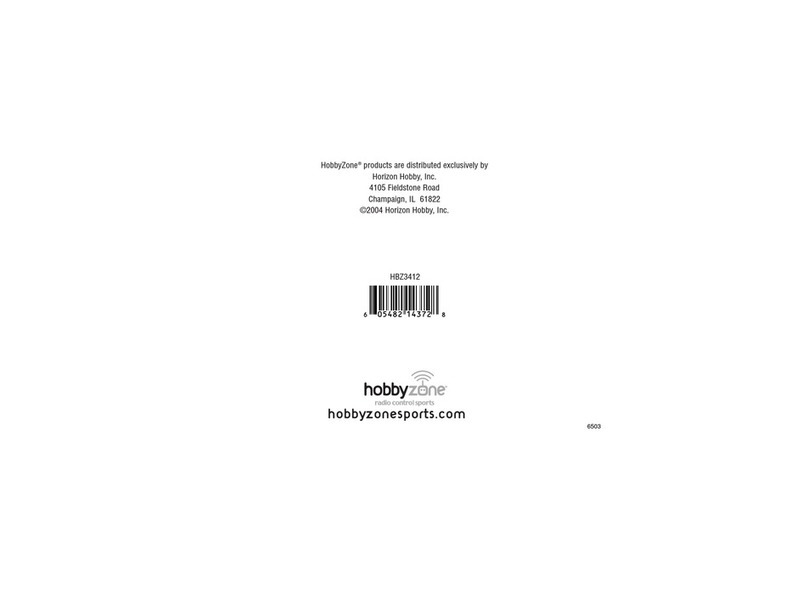
HobbyZone
HobbyZone ZIG ZAG RACER 2 instruction manual

3D Hobby Shop
3D Hobby Shop EPP EXTRA 330SC Assembly manual

Oregon Scientific
Oregon Scientific Clone Trooper Laptop manual
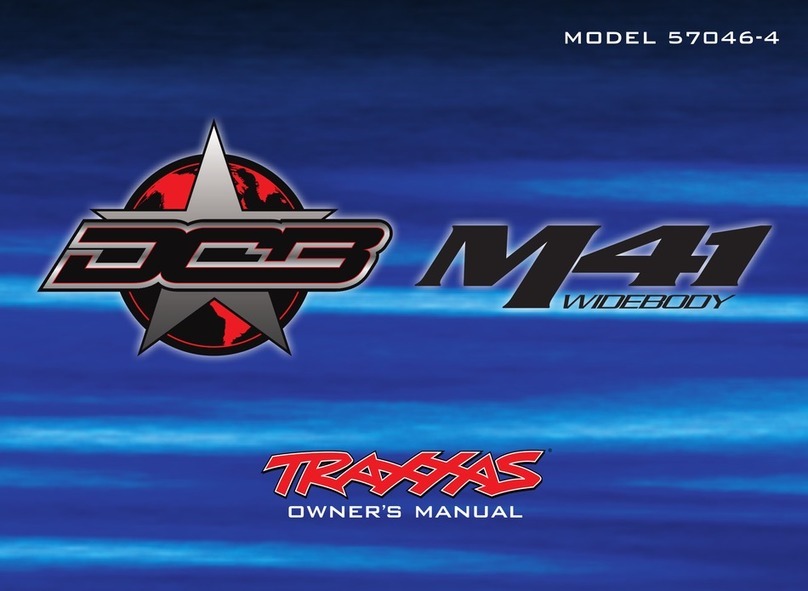
Traxxas
Traxxas DCB M41 WIDEBODY owner's manual
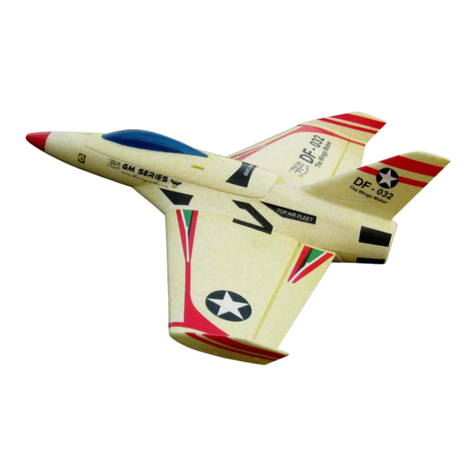
The Wings Maker
The Wings Maker DF-032 instruction manual
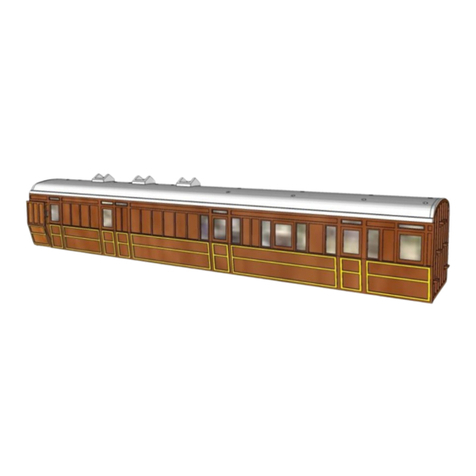
Diagram 3D
Diagram 3D D277 Assembly instructions

Canon
Canon creative park Service manual
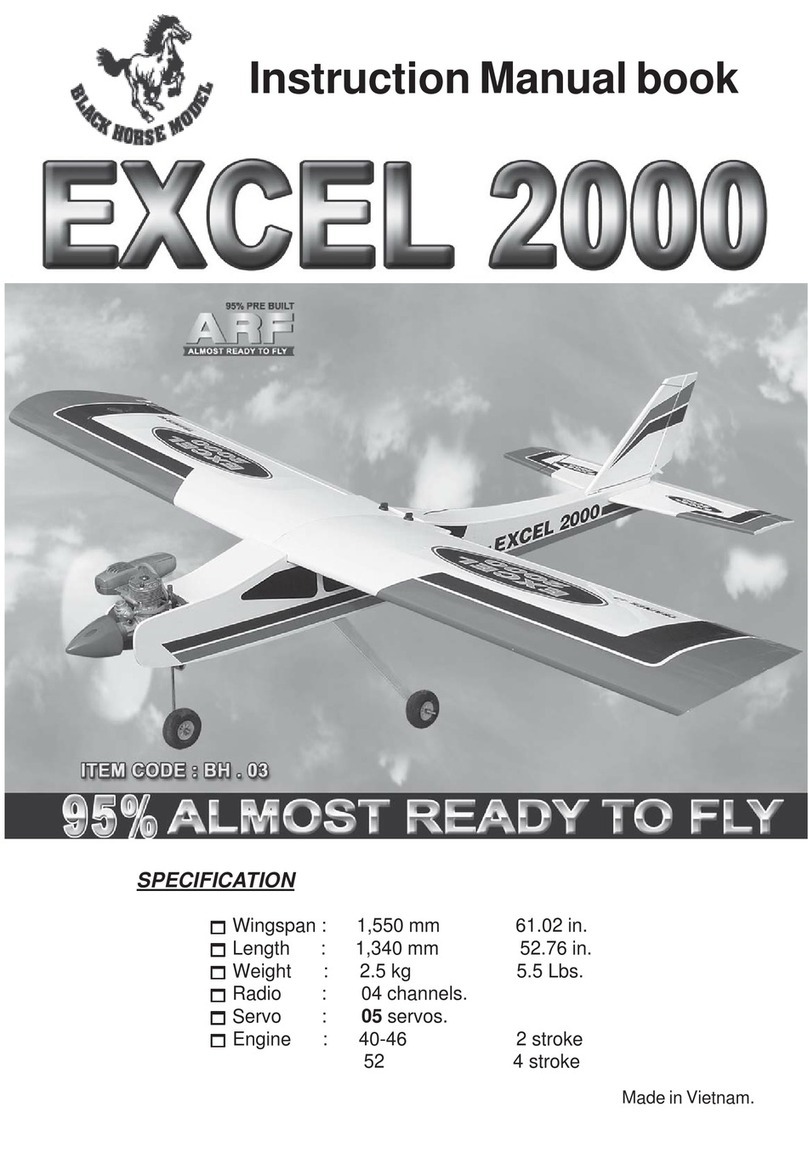
Black Horse Model
Black Horse Model Excel 2000 Instruction manual book
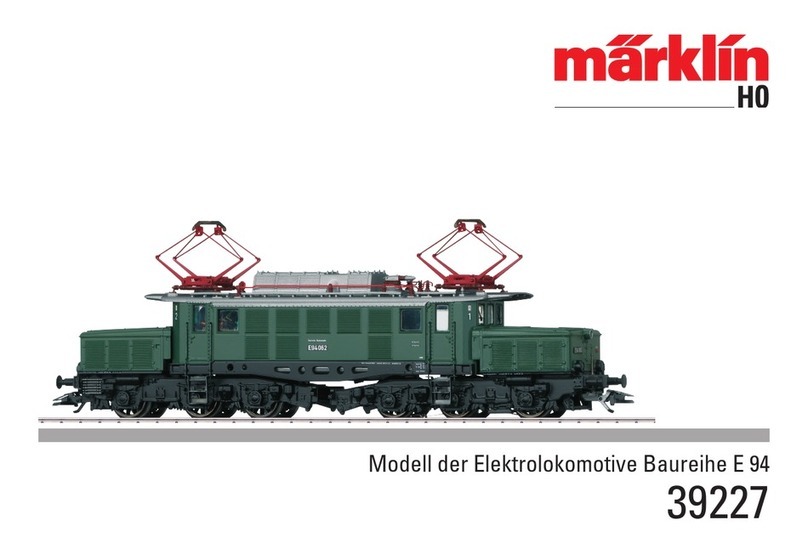
marklin
marklin Baureihe E 94 39227 manual

Oregon Scientific
Oregon Scientific 18032 instruction manual
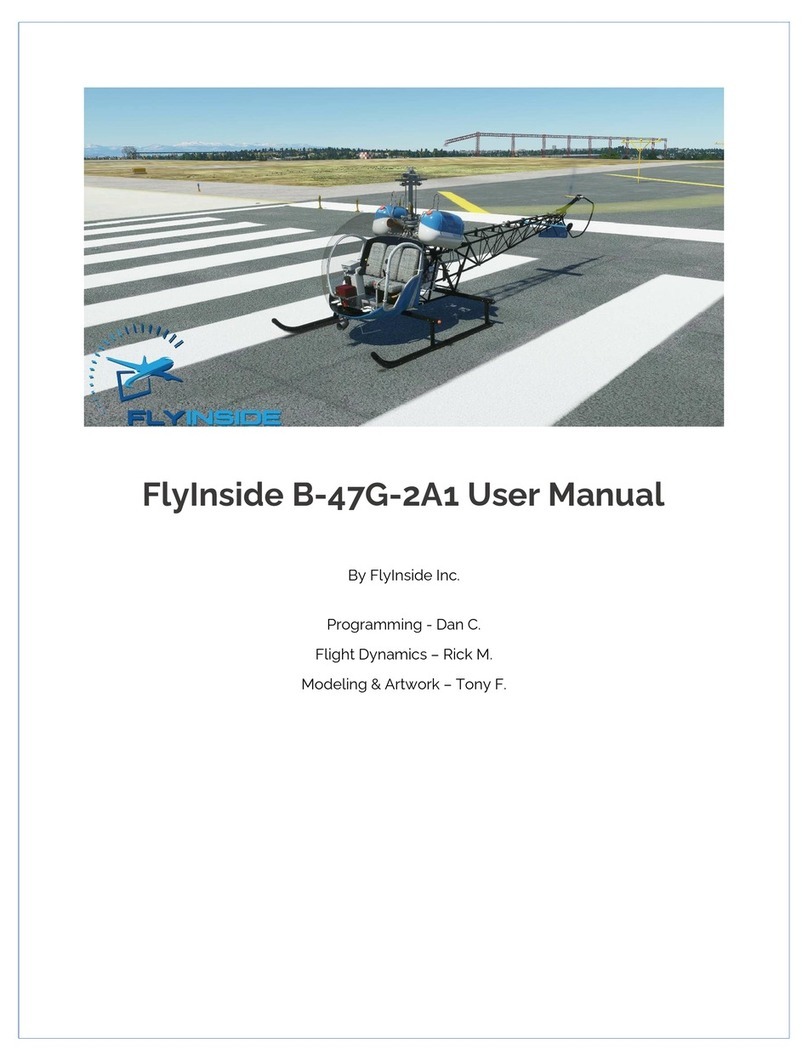
FlyInside
FlyInside B-47G-2A1 user manual
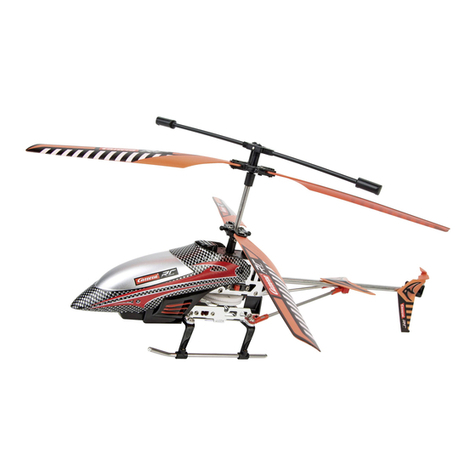
Carrera RC
Carrera RC Neon Storm Assembly and operating instructions

